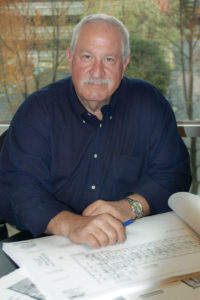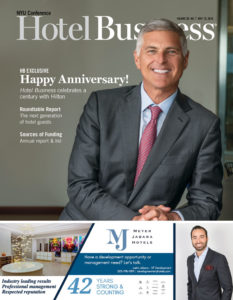 Founded 30 years ago by Jonathan C. Nehmer, Jonathan Nehmer + Associates Inc. (JN+A) is known for architecture and project management services in many industries, including lodging.
Founded 30 years ago by Jonathan C. Nehmer, Jonathan Nehmer + Associates Inc. (JN+A) is known for architecture and project management services in many industries, including lodging.
Over the years, the firm has survived ups and downs, including 9/11 and the Great Recession, growing from a handful of employees to 55.
After more than 30 years in the space, JN+A’s founder is retiring, but his legacy will continue to live on.
Hotel Business caught up with him to take a stroll down memory lane before he officially retired from his post.
How has the industry evolved over the years? We went from a “build it with one design” mentality to one of having designers participate in the research of what the guests really want and need in a hotel. Then, we expanded that idea to look into different designs to meet the needs of the different tiers of hotels. But, despite design trends, the advent of technology has had the biggest impact on design. When I started designing hotels, the TV armoire was king. Now, they are all firewood, and we are decluttering the room through the use of technology. Furniture is becoming multi-use and minimalistic with closets and drawers giving way to ledges and open shelves. Connectivity and power are staples of every space. Lobbies were once dead space, and barren rooftops are now vibrant and energized spaces. Going back to the late 1970s when I started in hotel design, I remember when we used pneumatic tube systems to get folios and information from the restaurant or the main office to the front desk. My, how times have changed, and it’s all for the better.
Looking back, what are your proudest moments? I am proudest of being able to build and sustain the firm through the tough times of 1990, 9/11 and the recession of 2009. The boom times are easy. What really lets you know that you have surrounded yourself with quality professionals and friends is how you react when it’s really tough. After 2009, we had to lay off half our staff, just like everyone else. Many firms didn’t survive, but we did because everyone in the firm helped us get through it. After things slowly started to recover, we were able to hire back many of the employees that we had to lay off—and we were ultimately able to get back to the pre-recession level of employees, work and revenues.
What advice would you give someone looking to get into this field? JN+A was founded on the idea that the architect has to be the master builder. It is a concept that had become lost over time. By the time I entered the workforce, architects had become “design advisors,” and construction professionals had come to feel that they could not rely on the architect or designer to provide workable solutions. I felt that this was not the way to foster a partnership to get a project done. There was too much friction between the professions. I set out to learn construction, so I could relate to the issues affecting the other half of the team. That experience proved invaluable and made me a better architect. Over time, the contractors I worked with appreciated the ability of our firm to solve problems and be true team players. Consequently, the best advice I could give anyone entering the field would be to learn what the rest of the disciplines have to do and need help with. The more you know about engineering, construction and design, the more valuable you will become, and your projects will show it.
How did you go about maintaining a work/life balance? Well, I had a secret weapon. My wife of 37 years, Geri Nehmer, was my CFO. I never thought that marrying someone with an accounting background would factor into our ability to manage and grow a business, but it proved to be invaluable. I have found that having someone smarter than me handle the money is a good thing. Because we basically “lived” the firm, we were able to be there for our children at all times and make our own schedule. We never missed our kids’ soccer games, theatrical events, graduations or vacations. While many of our “vacations” were working vacations, we were able to travel the world together and have fantastic experiences in the countries where we designed and built hotels.
How has JN+A evolved? Where would you like to see it 30 years from now? My original business model was to have five or six employees, not 55. I imagine that JN+A will continue to focus on the main three disciplines that got us here today—architecture, project management and interior design. Going forward, there are limitless opportunities for the firm to thrive. Over the past few years, we added branding as a service, which was something that I would not have thought of 10 years ago. So, kudos to the new leaders of JN+A for expanding the expertise and offerings of the firm. In 30 years? I hope I’m around to see the 60th anniversary.
What principles have you lived your life by? One of the most important things I learned from my father growing up was the importance of integrity. No matter what happens, no matter what the consequences, being true to your word and following through on your actions is more important than anything else.
One other thing that I learned early in my career when I was at Marriott was to always return calls. So many vendors/consultants/contractors would call on us and some of my associates would not return the call. It’s common courtesy to get back to people, even if the answer is no. Let them know that you respect them enough to call back. You would be surprised how many times I hear from someone who remembers that I took the time to return their call. It is a good business principle.
What does retirement mean for you? I don’t think that we ever really retire; we just don’t go into the office. But I do expect to take some time off, try to finally lower my golf handicap, and just take things a bit slower. I will have to learn how to change the 24/7 mentality and stop to appreciate everything around me. HB

